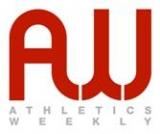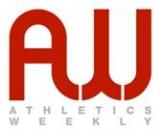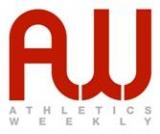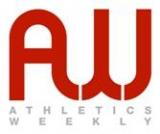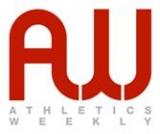Folders |
The rise of ‘vitamin IPublished by
A growing number of athletes use painkillers such as ibuprofen on a daily basis, viewing them as a pre-emptive strike against muscle soreness, but is it a good idea? Peta Bee investigatesIt is the little helper of the sports world the pill dubbed vitamin I” that has become ubiquitous among everyone from fun runners to elite athletes who take it to nip niggles in the bud and to offset fatigue. Studies confirm that before and during circuit training, weights sessions or long runs, a growing number of people are popping NSAIDs (non-steroidal anti-inflammatory drugs), most commonly the popular over-the-counter painkiller ibuprofen, in the belief it helps their bodies withstand fatigue and their muscles to perform double the work they would without it. Widespread useIt s definitely a huge issue at all levels,” says Tim Weeks, a triathlon coach and former advisor to four-time Ironman world champion Chrissie Wellington. And we are heading to the point where it is becoming socially acceptable in sport and at the gym. I work with a well-known client who was told by her previous coach, ‘pop a painkiller to get you through this tough treadmill session . It s frightening advice and potentially dangerous.” When researchers at the human performance lab at Appalachian State University in Boone, North Carolina, examined ibuprofen use among distance runners a decade ago, they found 70% of competitors said they used it to help them manage the pain of training and racing. It s not just athletes who rely on ibuprofen. Weeks says its use is so commonplace in football, it s unbelievable” with published studies showing that 86% of Italian footballers pop NSAIDs and 10% of all World Cup players admitted using painkillers immediately before every game. And, of the 327 triathletes who took part in one study published in the British Journal of Sports Medicine, almost 45% admitted popping a painkiller in the 24 hours before they took part in the event and nearly half used them on race day. Purported benefitsWhat is it about the everyday painkiller that has everyone buzzing? Ibuprofen blocks pain by interfering with specific enzymes in the body. Used appropriately, it is highly effective, but many are stretching that theory to extremes and using it inappropriately to stem tiredness and muscular fatigue. What s worrying, says Greg Whyte, professor of sport at Liverpool John Moore s University, is that the misuse of painkillers has spread from elite to recreational sport and is now massive” with endless unwanted side effects. People take it indiscriminately because they think it will help their athletic performance, but paradoxically it could have the opposite effect,” says Professor Whyte. For one, NSAIDs can adversely affect glucose uptake from the gut, which can lead to fluid retention and low energy stores during exercise.” Gut problemsJohn Brewer, professor of applied sport science at St Mary s University, Twickenham, says such biochemical changes can increase the risk of hyponatremia the condition in which the body s tissues become flooded”, which accelerates fatigue and, in extreme cases, can prove fatal. By reducing blood flow to the stomach and duodenal lining, overuse of NSAIDs can also reduce the mucus layer that forms a protective barrier in the gut. Without this layer, stomach acid can damage the gut lining, leading to a host of gastro-intestinal problems,” says Brewer. A scientist from Maastricht University found that ibuprofen use caused intestinal damage and gut leakage”. It was a reaction to the NSAIDs Paula Radcliffe had taken for an injury that she attributed to her problems in the 2004 Olympic marathon in Athens. The anti-inflammatories and stress upset my bowel so that I was unable to absorb enough energy and nutrients,” she said at the time. Other side-effectsWhen exercise scientists looked at the effects of ibuprofen use on a group of trail runners a few years ago, they found that those who had popped the pills before and during a particularly gruelling race displayed significantly more inflammation than the runners who hadn t taken them. The ibuprofen users also showed signs of mild kidney impairment and of low-level endotoxemia, a condition in which bacteria leak from the colon into the bloodstream. Perhaps the least attractive outcome, though, is that overuse of NSAIDs use could slow down the speed with which athletic goals are reached. During intense exercise, micro-damage to muscles causes inflammation and pain; this post-workout muscle soreness happens for a reason. Aching after a session is an important part of a process called the inflammatory cascade,” says Professor Whyte. It means that all the important cells circulating in your body are working to repair the damaged tissues. It s an essential adaptive process to training that is required if you are to get fitter and stronger. Taking NSAIDs is utterly pointless as it halts the whole process.” No quick fixIn short, take painkillers too often and the extra effort you put into training could prove fruitless. Ibuprofen has become linked with the quick-fix culture of fitness,” Weeks says. It is legal and available over the counter, so you think it is okay. But it can soon become a psychological crutch. People think they can t train without it. Yet it is no magic pill.” The post The rise of ‘vitamin I’ appeared first on Athletics Weekly. Read the full article at: www.athleticsweekly.com
|

